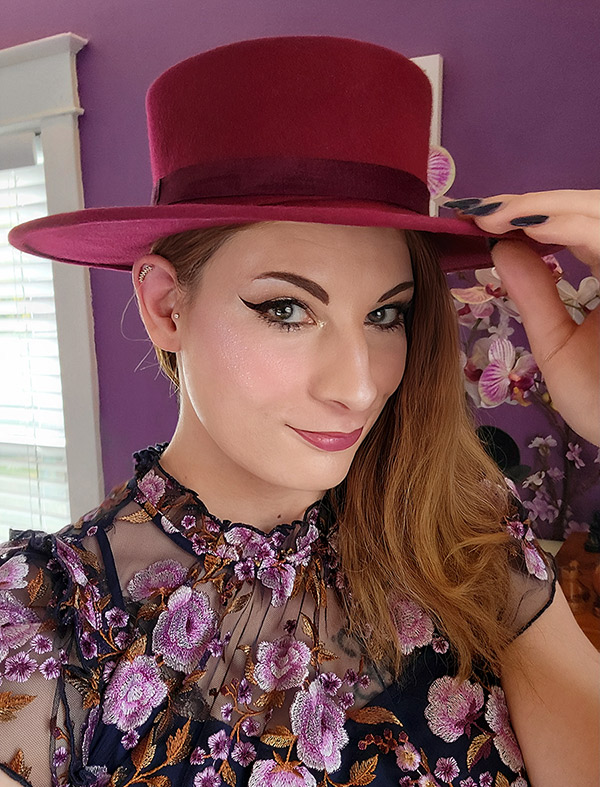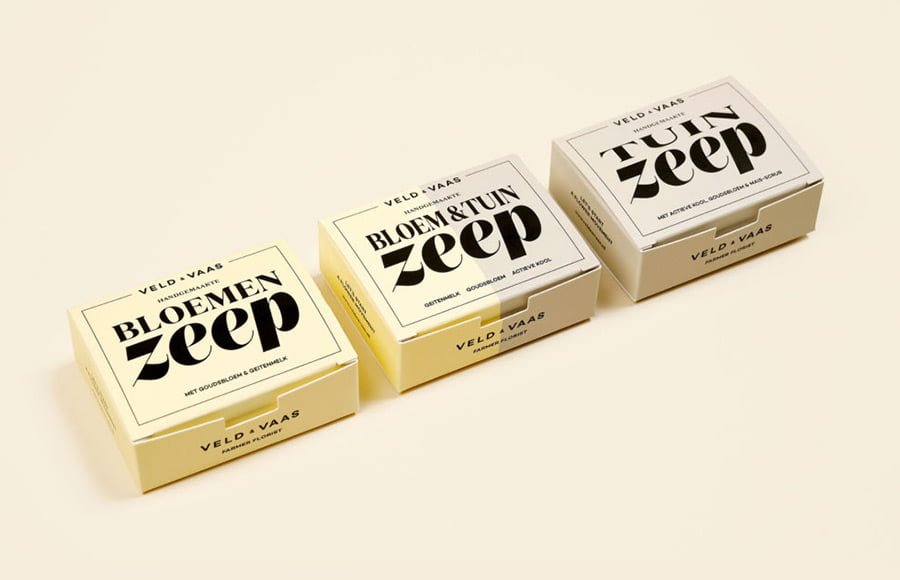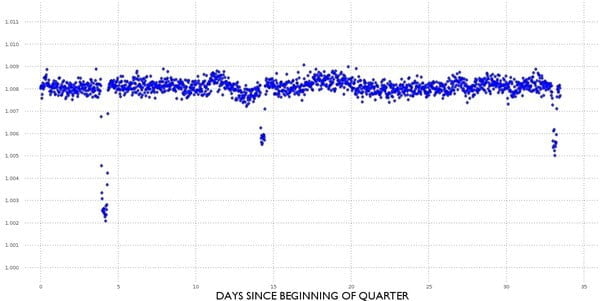Hey hey! I’m Eva.
Let me start with a confession. It took me 4 years since the launch of our website to write this ‘About me’ post! I just didn’t quite know what to write. What do you want to know about me? I don’t have a clue. Something interesting, I bet.
But there is also a deeper reason I couldn’t write this post until now. It’s because this post would have been about Martin Silvertant, and I was ashamed to be him. You see, I’m a trans woman, and earlier this year, at the age of 33, I finally made that step to become my authentic self! It has been—and continues to be—a profoundly liberating and joyful experience. And with that—although I still don’t quite know what to say about myself—I finally feel ready to write this post!
Mini-bio
Let’s start with a few silly little facts and mammary segments (that’s a suitable synonym for ‘titbits’, right?🤭):
- Honors her family name as a silver award-winning graphic designer, and thus has an incentive never to win gold.
- A lavish letter-lover and type tinkerer during the day, and the same during the night—but dreaming.
- Studied over 4,000 stellar light curves, and found approximately 15 exoplanets using the transit method—an entirely useless enterprise for a career in graphic design and autism advocacy.
- Autistic and analytical, and no less than intermittently insightful. If my insights are any less than that, you are guaranteed to get your respect for me back.
- Profoundly pedantic when needed; annoyingly pedantic when it’s not.
- I enjoy humor and wit. I try to take the inherent absurdity of life way too seriously—for comedic effect.
- Becomes an interdimensional supervillainess during sleep onset, which is arguably the best time to do it.

My roles
Research
Natalie and I co-founded Embrace Autism in 2018, with the intent to provide research-based information on autism that could help others—the same way that learning more about autism, our strengths, and working with our challenges has helped us. As such, I have always taken an active interest in browsing the research literature on autism, and writing articles.
Design
Research has always been a personal interest, stemming from my curiosity and eagerness to understand things better. By profession, I’m a graphic designer and illustrator, with a specialty in typography. I’ve been at this for 20 years now. Oof, that makes me feel old! But as a graphic designer, I’m responsible for the design of the website, and together with our design team, we produce all the zany illustrations for Embrace.
Communication
Since becoming a graphic designer, I have been fascinated with the fact that graphic design is all about communication—giving form and shape to text, layouts, and visuals. So, while I never envisioned starting an autism organization, it makes perfect sense to me that I would end up doing something I felt important enough to give form and shape to; to browse the research literature, synthesize the information and make new connections, and communicate that in a way that might appeal to… well, some autistic people at least. And of course, good/nourishing information could use a zany image to capture people’s attention, and some images that complement the text. That’s why we take pride in presenting our content as nicely and comprehensively as possible.
Business
Beyond that, I guess I’m a co-CEO when Natalie allows me to be. I’m joking! I’m not part of the assessment process, but we make the most important business decisions together. She manages the medical side of the business, while I focus on the technical aspects of the website.
Credentials
I’ve always had a propensity for creativity, and excelled at drawing at a very young age. I knew early on that I wanted to become an artist of some type; I figured there is a good chance I would become a comic book illustrator. That didn’t happen, however, as my interest expanded from visual art to graphic design. At 13, I started doing freelance work for clients in the music industry—designing and illustrating band logos, album covers, layouts, merchandise, etc.
Along the way, I acquired:
- A degree in multi-media design from the GLR in Rotterdam, the Netherlands.
- A BA in graphic design at the Willem de Kooning Academy in Rotterdam, the Netherlands.
- And as mentioned, I’m currently pursuing an MA in psychology, at Walden University in Minneapolis, US.
Oh and I won several design awards with a studio I used to work for, studio de Ronners.[1]Veld & Vaas | FontsInUse[2]European Design Awards 2018 nominations | Marketing Tribune[3]NIPKE | FontsInUse[4]NIPKE | Dutch Design Daily Considering my last name is Silvertant, I find it hilarious to say I’m a silver-award winning graphic designer, with an incentive never to win gold!

If you would like to see more of my work, just google ‘Eva Silvertant’ or ‘Martin Silvertant’ and go to Images, and some of my older work will surely come up. You will probably have more luck searching for Martin, because he had a 20-year track record while Eva barely had one. So curious, to make a name for yourself as a graphic designer and artist for over two decades, only to abruptly change it and almost start all over again.
But it’s lovely! I’m the most ambitious 1-year-old you will ever meet!
My autism story
This ‘About me’ post wouldn’t be complete without telling you a bit about my diagnostic journey, and how I came to discover I’m autistic.
I think I had a sense of being different from a very young age. One experience that stands out in my memory is when my parents gave me a birthday present when I turned 4 or so. I was really excited and happy with my present, but I suppose I didn’t express it (this is called reduced affect display, which is associated with autism).[5]A Transdiagnostic Review of Negative Symptom Phenomenology and Etiology (Strauss & Cohen, 2017) I remember my parents responding with confusion. My mom asked, “Don’t you like it?” I told her I did, which didn’t seem to convince her. I got the impression that my underwhelming response disappointed my parents. And so from then on, I made sure to over-express my responses to getting presents.
And yet, it didn’t truly register to me how different I was until I hit puberty. I started noticing many social and emotional interactions that just weren’t intuitive to me; but I realized people were expecting them from me. And so I faked them. That really started to bother me though. It confused me that I had to pretend to be like others, and it made me feel alien, or perhaps even broken. I tried to make sense of why I had to feign responses that seem to come naturally to others, but I couldn’t.
Not until at age 19, I came across a webpage that featured a long list of traits associated with Asperger’s syndrome as it was still called back then. I was absolutely shocked! Because except for just a few traits, the whole list applied to me. I thought it was absolutely amazing that this webpage could offer a perfect description of me, without ever having met me! It was a pretty profound experience.
And I guess that’s when I shifted from feeling alien and broken to just feeling different. For the first time in my life, I had something that fully accounted for who I am and why I behaved differently from others—why their mannerisms and social proclivities were not at all intuitive to me, and had to be emulated with deliberation. I finally felt less alone, too. Because I went from being unexplainably and uniquely different, to now having the name of a neurodevelopmental condition that applies to many others. Sure, we are a minority. But I was no longer one odd person. I’m a member of an arguably odd group, but that’s my normal.
When I told my parents I suspected I’m autistic, my mom said, “Oh yeah, we suspected as much when you were a child, but we asked your pediatrician, and he said there was no way.” Turns out he was wrong. I was surprised my parents actually suspected autism so long ago. It might have been helpful to let me know!
I’m not quite sure why I waited this long, but 6 years later—at the age of 25—I finally pursued a formal diagnosis. I was so relieved! Because even though I knew for sure I’m autistic, I was so emotionally invested in this explanation, that it would honestly have floored me had I been given a different diagnosis. My diagnostician suggested I may have ADHD, which I firmly denied—afraid he would diagnose me with that instead.
He did diagnose me with autism, but a few years ago (when I was around 31), I discovered I have ADHD as well. My diagnostician was right! I just felt too vulnerable and fearful at the time to acknowledge that.
Another significant piece of the puzzle came from alexithymia, which I discovered when I was around 28. I never quite managed to make sense of my empathy until I came across that concept. I just figured I would mention that, for those not yet familiar with alexithymia. Read the post below for a comprehensive guide on alexithymia as it presents itself in autistic people.
Alexithymia & autism guide
Sharing ideas
I became interested in contributing to science and advancing our understanding of things long before I embarked on this autism enterprise. For example, I have been fascinated with astronomy all my life; for a while, I contributed to astronomy as a citizen scientist analyzing Kepler data. I analyzed over 4,000 stellar light curves, and found approximately 15 exoplanets! You can read more about that in the article below if you’re interested.
Hunting exoplanets using the transit method

I’ve picked up a myriad of different interests in my life, and became an autodidact at quite a few things—from learning graphic design and coding websites, to studying theology—and even considering doing a bachelor’s degree in theology at one point. I’ve never really been religious, but I was fascinated with its ontology and metaphysics. Many of my endeavors, special interests, and career choices may seem somewhat random, but I noticed a pattern. At the root of it all is a love of learning, and a desire to share what I’ve learned. I just get so excited about things that I can’t keep it to myself.
For that reason, quite a few of my interests have to do with sharing knowledge.
- The love for literature—the ancient vehicle of knowledge. I have a deep appreciation and sense of wonder for language and writing systems. It’s amazing how we managed to develop ways to encode information that can be decoded or replicated.
- The love for letters, the wondrous curves and idiosyncrasies of typefaces, and the influence their particular designs have on readability, legibility, and even on our mood. It’s powerful how much meaning can be conveyed not only with words, but with the styling of those words.
- The love for text, and the rules that govern it. Typography is a fairly niche interest that not many people know a lot about, and yet we come into contact with it every day when we read.
- The love for books as a physical medium. As a teenager, I collected old bibles, some of which were beautifully illustrated by the likes of Gustave Doré—one of my inspirations, and a huge influence on my illustration work.
So whether I design typefaces to be used to convey meaning, or typeset text as a typographer, or design books and give shape to layouts as a graphic designer, or practice my passion for exploring ideas and conveying them through writing—all of it is about communication!
Q&As
Below are a few random questions we’ve asked our Embrace Autism Community members as a way to introduce themselves. Some of the questions are pretty silly, but the answers can potentially reveal interesting things about a person.
If you could only eat one meal for the rest of your life, what would it be?
I think the question is getting at what my favorite food is, but my favorite meal is probably not going to be anything that could realistically sustain me all my life. I love fries with mayonnaise! But how is that for daily food? If it’s a whole dish, about the most amazing food I’ve ever had was at a Yugoslav restaurant in the Netherlands that no longer exists. Grilled meat, red rice with tomatoes, fries with mayonnaise, and some salad and sauerkraut.
One problem I have though is that I will inevitably get sick of eating the same food, even though that moment may come way later than is (neuro)typical. I tend to have these periods where I really enjoy eating a particular food a lot for several weeks, then get bored of it, and switch to something else. As much as I like to wear and eat more or less the same every day, I couldn’t handle a lifetime of it!
How long would you want the rest of your life to be?
If we can delve into the realm of science-fiction and I can have an extended life without aging or by being transferred into a new body, then I would probably say indefinitely—until I get bored of it. Will I ever though? I’m not convinced.
What was the last book you read?
The last book I read was ‘A Gift of Time’ (2016) by Jerry Merritt. I highly recommend it! It’s a character-driven sci-fi novel with a truly captivating and emotional story. It impressed me a great deal.
I’m currently reading ‘The Gods Themselves’ (1972) by Isaac Asimov, which is fantastic as well. A few other books I absolutely adore:
- The ‘Remembrance of Earth’s Past’ trilogy (2006, 2008, 2010) by Liu Cixin — I’m having trouble finding any sci-fi novels that feature so many grand and novel ideas
- ‘Contact’ (1985) by Carl Sagan came pretty close. Beautiful book!
- ‘Recursion’ (2019) by Blake Crouch is a pretty amazing sci-fi story revolving around memory.
- The short story ‘Exhalation’ (2008) by Ted Chiang made a profound impression on me.
- And finally, ‘Project Hail Mary’ (2021) by Andy Weir is both inventive and absolutely hilarious.
Do you collect anything?
At the moment, I don’t believe I do. As a kid, I remember collecting various sticker books and cards. As a teenager, I started collecting old Bibles, and other old books; and I tried to get the complete discographies of bands I liked. Actually, I was an incredibly obsessive collector as a teenager and in my early 20s, but not so much about material items as digital files.
For example, I built a huge collection of images on my computer, which I neatly organized into different folders and subfolders. It’s mostly art and designs that inspire me, and reference material to use for my own work. Of course, all the painters are sorted by century, all the illustrators are sorted by medium, and all the typefaces are sorted by design classification, type foundry, and type designer. I don’t necessarily have a consistent organization for each folder, but I maintain an organization that makes sense to me. I still do this, but I don’t maintain my archive as rigorously anymore, and I no longer actively search for designs to expand my archive with.
I think it all has to do with how much more overwhelming life feels now. I used to actually take my time to rename all those files and organize everything. But that also means I spent hundreds of hours organizing a digital collection no one will ever see. And I crashed two external drives in my life, where I lost most of my archive—including my own work portfolio. That does make you wonder, “Is this worth spending time on—again?” It used to feel a lot more important to do when I was younger, and computers were more localized. My computer felt like my whole life; it contained everything that inspired me, and everything I needed as an artist and designer. Now, my life feels a lot larger, and my image archive feels a lot less important. And I don’t want to start any physical collections, as I already feel overwhelmed with all my stuff as it is. The older I get, the more I want to minimize.
Do you have any questions? Feel free to ask!
Or follow me on Facebook for further fanciful foolery:
Comments
Let us know what you think!